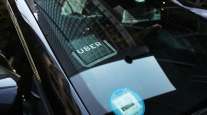Managing Editor, Features and Multimedia
How Autonomous Trucks Could Lead to More Driving Jobs, Not Fewer

Self-driving truck developer Uber Technologies Inc. predicts that transfer hubs for longhaul autonomous trucks will increase demand for local drivers, countering perceptions that automation will lead to widespread job losses in trucking.
In a Feb. 1 blog post, Uber’s Advanced Technologies Group made the case that its vision for autonomous trucking would not only improve the efficiency of freight transportation, but also yield an increase in more desirable truck driving jobs.
The company argued that projections of automation’s effect on trucking jobs often fail to account for the industry’s operational and demographic realities.
TALK ABOUT IT: On our Facebook page
If current trends continue, the trucking industry will need to hire about 900,000 new drivers over the next decade just to replace retirees and handle expected growth in freight volumes, Uber ATG said, citing estimates from American Trucking Associations.
Under this model, shorthaul drivers would transport shipments from warehouses or factories to transfer hubs built near highways. From there, autonomous trucks would haul the cargo over the road to another hub, leaving other shorthaul drivers to complete the final leg of the delivery.
“To meet this demand, the trucking industry will need to evolve,” Uber ATG said in the post. “Driving jobs must become more appealing and accessible to attract a younger demographic, and the industry must become more efficient. We think that self-driving trucks can help.”
Late last year, Uber ATG outlined its concept of transfer hubs, where self-driving trucks designed for highway operation would hand off freight to local drivers, and vice versa.
Under this model, shorthaul drivers would transport shipments from warehouses or factories to transfer hubs built near highways. From there, autonomous trucks would haul the cargo over the road to another hub, leaving other shorthaul drivers to complete the final leg of the delivery.
“Transfer hubs are an essential part of our vision for the future,” Uber ATG said in the post. “We see them placed strategically across the country near cities and towns, bridging the gap between local and longhaul trucking.”
Another self-driving truck developer, Embark, has painted a similar vision of the industry’s future, with autonomous trucks operating only on highways while manned trucks handle the short hauls at the beginning and end of each journey.
Uber ATG said complex tasks such as driving on busy city streets, backing into docks and loading and unloading cargo require skills “that will be hard for self-driving trucks to match for a long time.”
“By taking on the longhaul portion of driving, self-driving trucks can ease some of the burden of increasing demand, while also creating an opportunity for drivers to shift into local haul jobs that keep them closer to home,” the company said.
Uber ATG said it has worked with economists and industry experts to research the potential economic implications of the transfer hub model.
Based on that analysis, trucking jobs will start to shift from longhaul to local delivery as self-driving trucks begin to operate on highways.
And, contrary to popular perceptions, the introduction of self-driving trucks could actually create a net increase in truck driving jobs, Uber ATG said.
Uber thinks self-driving trucks will create more jobs than they destroy—and trucking experts don't disagree, reports @alexismadrigal https://t.co/bieVmjXcEY pic.twitter.com/BEbkO3LbiF — The Atlantic (@TheAtlantic) February 1, 2018
Self-driving trucks operating around the clock could do double the work of today’s trucks, which would make longhaul routes significantly more efficient, the company said. That increase in efficiency would slash transportation costs and reduce the price of goods for consumers. Lower prices would drive higher consumption, which in turn would further boost freight volumes and require more drivers.
In that scenario, longhaul jobs would shift over time to local delivery to support the rising amount of freight moving in and out of transfer hubs.
Uber entered the self-driving truck business in August 2016 through its acquisition of Otto, a deal valued at $680 million. Uber later retired the Otto name and combined that business with its Advanced Technologies Group, which is developing self-driving systems for both cars and trucks.
In May, the ride-hailing pioneer also launched Uber Freight, a mobile app designed to efficiently match truck drivers with loads through a one-touch booking process.



